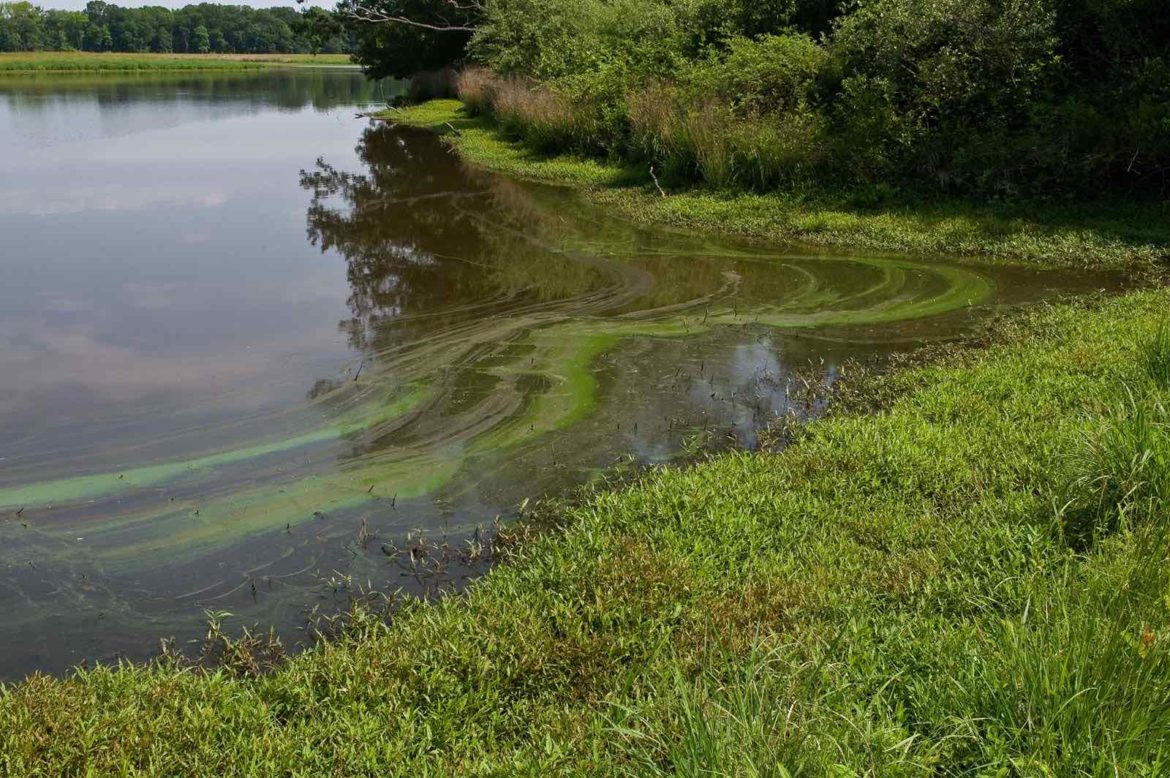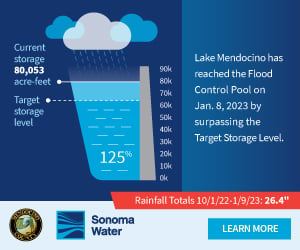MENDOCINO Co., 9/4/2020 —Dangerous cyanobacteria, sometimes known as *blue-green algae or harmful algal blooms (HABS), have been found in the Navarro River. The cyanobacteria can be harmful to people and sometimes even fatal to small children and pets.
The California Department of Parks and Recreation warns people to stay out of the Navarro River and not to let their pets go into the river water. They also mentioned that people should not eat fish or shellfish from the river, and not to drink the water. They noted that boiling or filtering the water will not make the water safe.
Generally, cyanobacteria blooms are blue or green, but they can range across the color spectrum, from white to brown to red. Sometimes, the bacteria makes the entire body of water turn into a transparent pea-soup color. It can also take the form of floating spots that look like large paint chips, or clumps that look like algae, the kind you might see stuck to a dock. Essentially, cyanobacteria can take many forms.
Cyanobacteria can cause a variety of negative health effects including vomiting, nausea, pneumonia, headache, tingling, burning, numbness, salivation, incoherent speech, and respiratory paralysis, which leads to death.
Blooms typically crop up around this time of year — late summer and early fall, so it’s important to be wary when swimming in all rivers, not just the Navarro, where presence of toxic cyanobacteria has been confirmed. Cyanobacteria tend to thrive in warmer, stagnant waters, so near the shore and in small pools. If you do come in contact with cyanobacteria, you can follow these CDC guidelines.
Toxic cyanobacteria are increasing worldwide due to human activities that result in water pollution from sources such as wastewater treatment plants, contaminated stormwater, runoff, and more.
Climate change is also increasing the presence of toxic cyanobacteria. The bacteria prefer standing water, low turbidity, and warm temperatures. As the climate begins to warm and more water evaporates into the atmosphere or is siphoned away for human use, rivers slow or even become stagnant in some areas. The stagnation allows the water to quickly warm and let more light to pass through the water, creating optimal growing conditions for algae.
*Although the terms blue-green algae and HABS are used to describe cyanobacteria, it is not technically a type of algae, but rather a type of bacteria that gets its energy from the sun, through photosynthesis.



Thanks for writing about this shameful environmental situation on the Navarro River. WHY doesn’t the article state clearly that the “water pollution from sources such as wastewater treatment plants, contaminated stormwater, runoff, and more” is from the vineyard runoff of fertilizers and pesticides???? Why does our county government and press cover up what the overabundance of vineyards in Anderson Valley has done to the Navarro? That, plus climate change and the drought (less water to break through the sandbar), have all contributed to this disaster. We can’t make it rain or cool down but we can regulate the vine industry and should do that NOW!!!!
Totally agree 👍
While it is possible that the scummy bloom is related to vineyards in Anderson Valley, that is a matter of conjecture. I’m not aware of any scientific studies or forensic investigations that support the idea.
Some suggest dredging the Navarro River would solve the problem, but dredging has never been done on the Navarro. We don’t know that it would solve the problem, and a dredging project there would cost tens of millions. Federal funding for such dredging is allocated by economic need, such as to improve harbors and navigation, neither of which apply to the Navarro.
As the article points out, cyanobacteria blooms are common this time of year and are not unique to the Navarro. So let’s not jump to conclusions based on assumptions and conjectures.
There are many scholarly articles and studies devoted to fertilizer runoff and Cyanobacteria. Do AV vineyards use the same type of fertilizers studied? Not sure…but to dismiss this concern as conjecture is inaccurate.
In any case, we should expect more in-depth reporting from our local newspaper on this recurring problem (including the annual algae blooms more generally) and the conceivable (if not already documented) causal link with up-river agricultural practices.